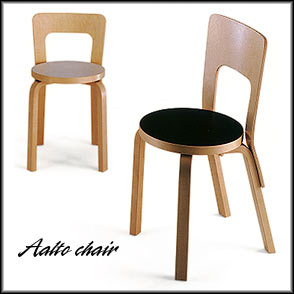Thursday, January 31, 2008
The List
Paperwork:: Lena
Finish Design:: Adam, Amber
PR:: Tom, Amber, Lena
Fabricator Consultant:: Rob, Ross, Tom
IMA Correspondent:: Boone
Treasurer:: Joe
Exhibition Coordinator:: AJ
Shop Window:: Boone, Brandon
Exhibition Catalogue/Intermedia Design/Web Coordination:: Ross, Kyle, Hoop
Indiana Manufacturer Research:: Rob, Adam, AJ
File Manager:: Joe
Project Coordinator:: Kyle Perry
Monday, January 28, 2008
Studio Design


The ceiling responds to how high or low each piece is displayed. If the piece is displayed higher, then the ceiling is raised more and if the piece is displayed lower then the ceiling would come down more. This way, the person viewing the exhibit will feel a presence and the closeness of the room.

Bottom View

Top view
Sunday, January 27, 2008
Scripting Assignment
Wednesday, January 23, 2008
Friday, January 18, 2008
Thursday, January 17, 2008
Alvar Aalto
Furniture and Glass: THE MUSEUM OF MODERN ART, NEW YORK
Alvar Aalto (1898 - 1976) is a Finnish architect and designer, who during his time created building, furniture and glassware. He is often thought of as "Father of Modernism" in Nordic countries.
The 1938 exhibition was devoted to Alvar Aalto and to his furniture design. Since that time, the Museum has shown an interest in collecting and displaying examples of his designs. Today, there are 20 pieces of his furniture in the Design Collection, which also include his glass and lighting fixtures.
In 1929, Alvar Aalto produced a side chair that could be easily massed produced. This chair was economical to produce and easy to store because of it's stacking ability. "His work was so appealing in its warmth, humanity, and unpretentious common sense that it was admired everywhere" ( Stewart 2).
Later on Aalto experimented with plywood and bonding layers of wood together in order to form different patterns and results. These investigations allowed Aalto to design a new seat "that extended the conventional L-shape at both top and bottom into bold volutes."(Stewart 4). This was important because it allowed him to get away from the traditional old frame where the chair relied on the four legs for support. Instead, the new frame suspended a spring seat that relied on sontinuous ribbons of wood, which was bent into approximate horizontal rectangles, the tops of which served as arm rests and the bottoms as skids. This new design gave Aalto recognition as a furniture designer and his new design was called "the first soft wooden chair."
Aside from wood, Aalto also experimented with metal. His tubular steel chair that he designed in 1930 was light and suitable for mass production. This design used the C-shape technique which could be upholstered or left bare.
Another design Aalto created was the L-leg chair, which allowed the legs to be fasted directly underside of the top. This allowed the top of the surface untouched as opposed to connecting the legs with screws that went through the top surface. Aalto achieved this by back-sawing the top of the leg and then inserting "leaves" of wood that were dipped in casein glue. Aalto's leg design was used for stools, tables and chairs. In addition, the L-leg was easy to mass produce at various sizes and was the most economical in furniture assembly.
His creations were simple and efficient, both in production and in use. "Aalto believed deeply in the need for standardization furniture design, but not at the expense of variety" (Stewart 13).


Monday, January 14, 2008
Relations: Information Exchange in Designing and Making Architecture
Architecture is information. The more we know, the more we can produce.
Digital technology has transformed how data and information flow and is exchanged between people. With the internet and other technologies, everything is literally “at your fingertips.” This kind of digital exchange has revolutionized architecture and how people design. It is now possible to have a firm that is located in New York build a project in Japan and being connected to that part of the world 24/7.
In addition, the digital exchange allows the players [architects, manufacturers, fabricators, material suppliers, engineers, and others who are involved with the project] to collaborate faster and more effectively between each other.
However, this collaboration can only occur if the information is well organized and articulated clearly. If the information is not presented clearly, then the digital exchange is handicapped and the communication between the players deteriorates.

